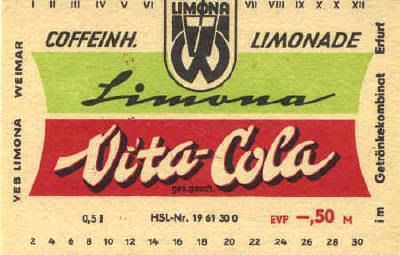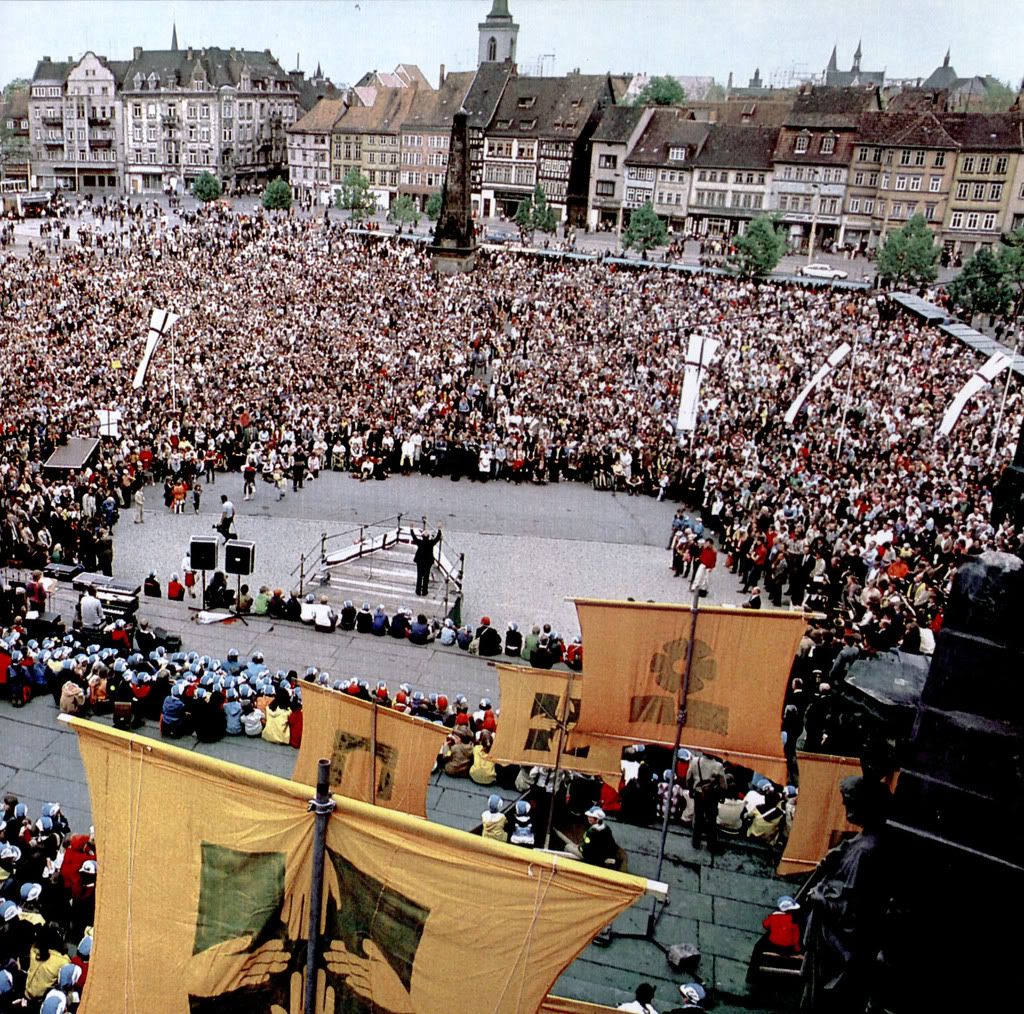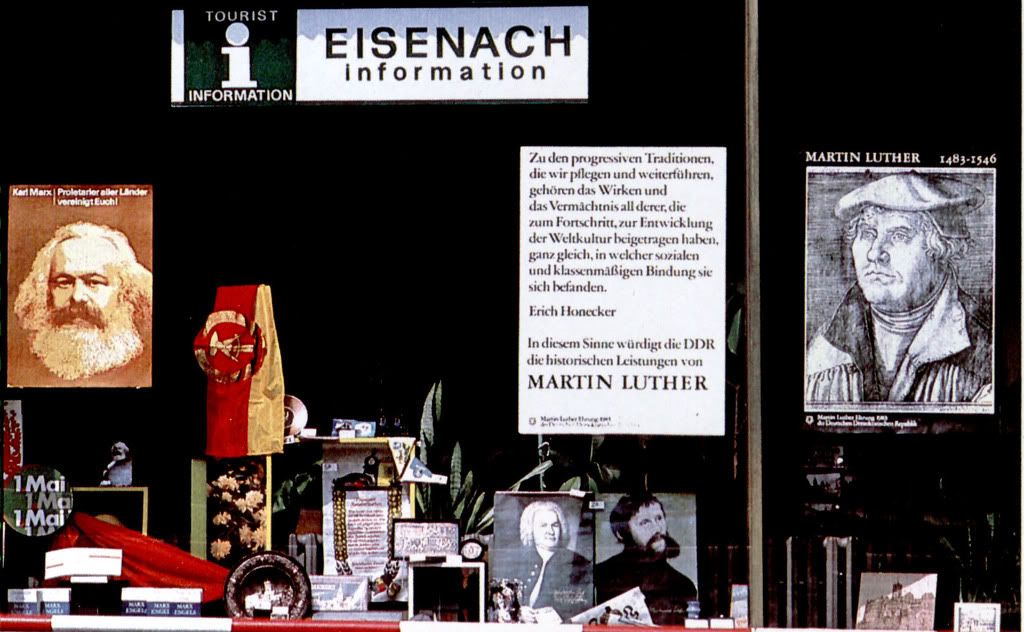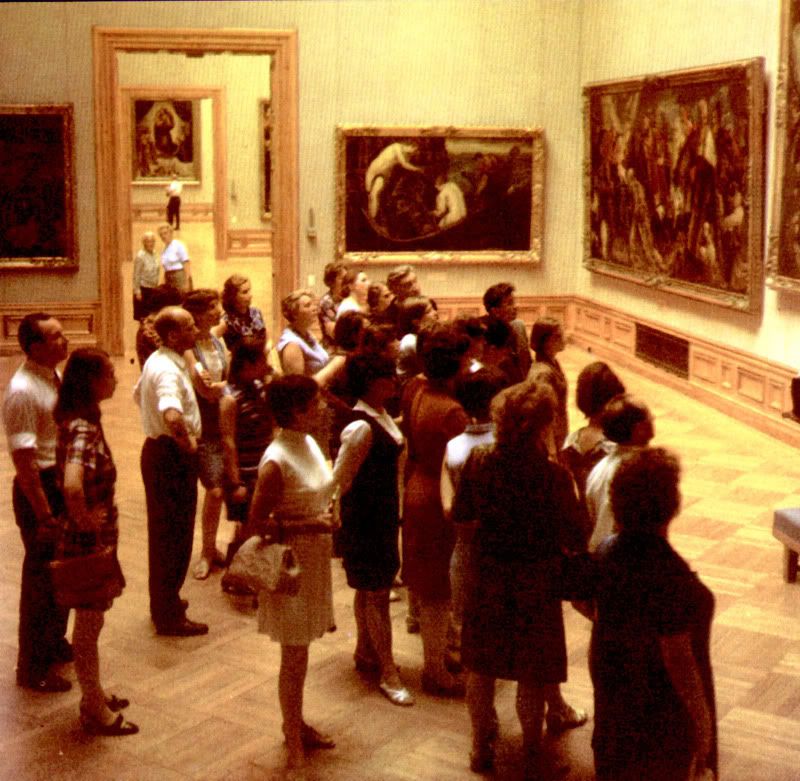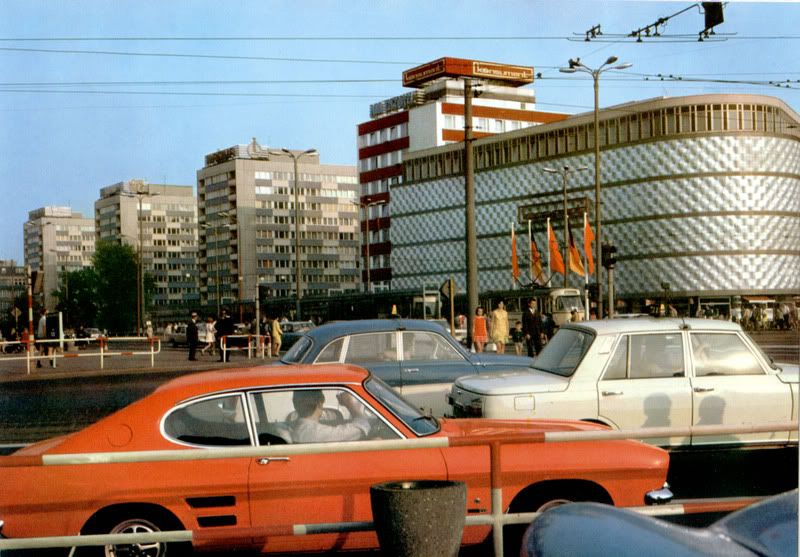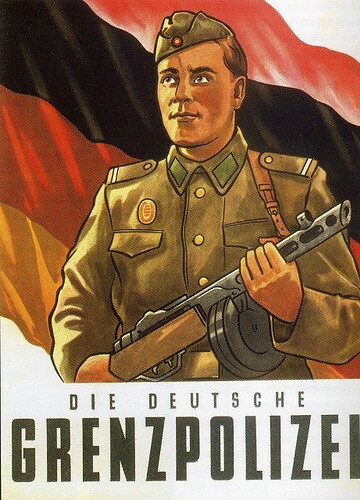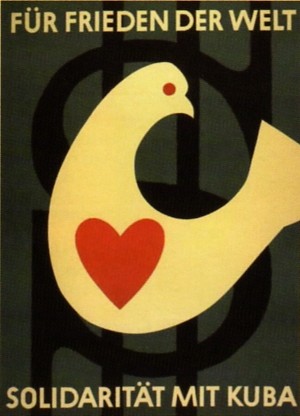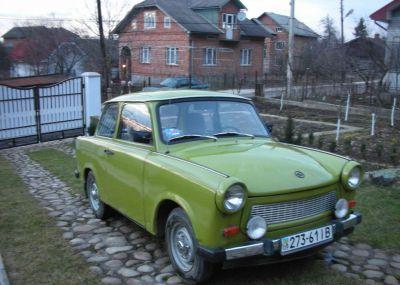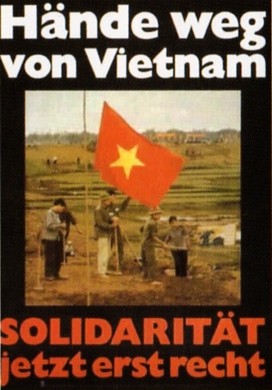Berlin - Checkpoint Charlie October 1961
http://warandgame.wordpress.com/2007/12/05/checkpoint-charlie-october-1961/

The stand-off between U.S. Army M48 tanks and Soviet T55 tanks during the border dispute of late October 1961.
Quote:
"The four powers governing Berlin (the United States, the United Kingdom, France, and the Soviet Union) had agreed at the 1945 Potsdam Conference that Allied personnel would not be stopped by German police in any sector of Berlin. But on 22 October 1961, just two months after the construction of the Wall, the US Chief of Mission in West Berlin, E. Allan Lightner, was stopped in his car (which had occupation forces license plates) while going to a theatre in East Berlin.
Kennedy sent General Lucius Clay, the bullish commander of the American sector during the 1948 airlift, and Vice President Lyndon B. Johnson to visit Berlin. They were rapturously received by the West Berliners. In front of a giant crowd outside the town hall, Johnson affirmed America’s pledge “to the freedom of West Berlin and to the rights of Western access.” At the same time, an American combat unit of 1,500 well-armed soldiers was sent up the East German autobahn from West Germany to reinforce the Allied garrison in West Berlin. The Soviets stopped and counted them but then let them pass. On arriving, they paraded down the main street of West Berlin, the Kurfuersten Damm, amidst cheering, weeping crowds. The unit’s commander said it was the most fabulous reception he had experienced since the liberation of Paris in 1944. West Berliners now felt assured they would not be abandoned.
Most of the old crossing points were closed. The East Germans allowed the use of only seven. Although West Berliners were not denied continued access to East Berlin, they needed special permits. And only one crossing point would permit other Westerners to cross into the East. This gateway would enter Cold War mythology as the place where East met West: Checkpoint Charlie, the exchange point for spies.
Rusk and Soviet foreign minister Andrei Gromyko continued to talk, into the fall, about finding a political solution to the Berlin stalemate. Khrushchev even invited Kennedy to Moscow. The president declined the invitation but agreed to set up a confidential back channel through which per*sonal views could be exchanged. Kennedy decided to ask General Clay to return to West Berlin as his special representative, but McGeorge Bundy warned him that “Clay will be a burden to you if he takes a line more belligerent than yours.” Kennedy insisted that his appointment would reassure Berliners. Clay, on the other hand, believed he was being sent to Berlin to take on the Soviets. As soon as he arrived he ordered the building of a concrete wall at a military training school, so his soldiers could practice knocking it down.
Towards the end of October a senior American diplomat and his wife were denied access to East Berlin to attend the theatre, because they refused to show the East German border guards their passports. The four-party agreements that governed the city guaranteed free movement of Allied and Soviet personnel without passport formalities, so Clay sent a squad of armed US soldiers to force the issue and accompany the diplomat in his car into East Berlin. Over the next few days, American jeeps started to convoy US civilians on pointless excursions into East Berlin, each jeep full of battle-ready soldiers ostentatiously flaunting rifles. Ten American M-48 tanks were pulled up near Checkpoint Charlie.
On the morning of 27 October, thirty-three Soviet tanks rolled into East Berlin and halted at the Brandenburg Gate, the first Soviet armour in the city since the uprising of 1953. Ten tanks drove on to Checkpoint Charlie and lined up facing the American armour barely a hundred yards away. For the first time in the Cold War, American and Russian tanks directly faced each other across a tense border. The American gunners loaded their cannons and awaited orders. An alarmed Kennedy spoke with Clay from the White House but assured him of his full support. As the hours passed the situation grew even more tense. The US garrison in West Berlin was on full alert, then NATO was put on alert, then Strategic Air Command. The Soviet military commander had a direct line to the Kremlin. Khrushchev told him that should the Americans use force, he must respond with force. Commanders on both sides were worried that, in all the tension, some nervous soldier would fire his weapon and trigger a shoot-out. A petty dispute over showing passports at a border crossing threatened to escalate into a global conflict.
Both sides realized that the situation had got out of hand. Through the back channel just set up, Kennedy sent a message directly to Khrushchev ask*ing that the Russians withdraw and assuring him that the Americans would do the same.
At Checkpoint Charlie, after a sixteen-hour standoff, the first Soviet tank started up its engine and withdrew five yards. The tension was broken. A few minutes later, an American tank pulled back the same distance. One by one the tanks withdrew. There was another sigh of relief. Clay, however, was done for. General Bruce Clarke, commander of US forces in West Germany, demanded, “What in the hell did Clay think he was doing? You don’t spit in the face of a bulldog.” NATO’s commander was furious that an unplanned dispute had threatened to engulf his forces in a conflict that could not be won. Clay remained in Berlin a few months longer and then was called home. And, with*out publicity, Washington ordered civilian officials not to visit East Berlin for the time being."
T H E B E R L I N C R I S I S
1 9 5 8 - 1 9 6 2
http://www.wildfleckenveterans.com/berlin-crises.php
M48 Tanks in Berlin
by SP5 Conrad (Connie) Schornhorst
Tank Co. 6th Inf. Reg. & Co F (PATTON) 40th Armor
1958 - 1960
http://www.berlin-brigade.de/honor/honor18.html#connie

